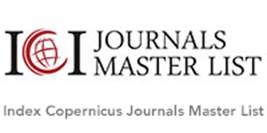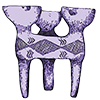Forced Migration and Women in the EU Law from Lisbon Treaty to Today
DOI:
https://doi.org/10.33831/jws.v20i1.45Keywords:
migration, forced migration, women, gender, EU, EU LawAbstract
Migration is attracting a considerable level of attention which plays a significant role in International Relations. In a plain and simplest term, migration is referred as to as an act of relocation. International migration e.g. relocation that involves crossing of borders or forced migration e.g. involuntary displacement all play important roles in today’s global and EU politics. Indeed, the fact that there are approximately 66 million forced or displaced people in the world reveals why forced displacement has quite obvious impacts on states’ policies. Women constitute more than half of the forced or displaced population. Research shows that even though men and women experience varying issues throughout their migration journeys, the impacts of migration on females are considerably more detrimental when compared directly to the males’. Thus, Gender, which has a long running history in terms of its importance and development, has a significant place in the migration studies that focusses on individuals. Gender mainstreaming—which implies paying special regard to the equality of gender, is one of the main principles of the EU policies. This study therefore focuses on the position of women in the EU law with respect to the gender, especially since the Lisbon Treaty.
References
Bilçen S. (2010). AB'de Önemli Bir Adım: Lizbon Antlaşması. Türkiye Büyük Millet Meclisi Başkanlığı Web Sitesi. İnternet adresi: https://ww w.tbmm.gov.tr/ul_kom/kpk/docs/lizbonsumru24032010.pdf. Erişim adresi: 9.8.2017.
Birleşmiş Milletler (1951, Temmuz 28). Mültecilerin Hukuki Statüsüne İlişkin Sözleşme. İç İşleri Bakanlığı Göç İdaresi Genel Müdürlüğü. İnternet adresi: http://www.goc.gov.tr/files/files/multec%C4%B1ler%C4%B1nhukuk%C4%B1statusune%C4%B1l%C4%B1sk%C4%B1nsozlesme.pdf. Erişim tarihi: 9.8. 2017.
BMMYK (2017, June 19). Figures at a Glance. UNHCR. İnternet adresi: http://www.unhcr.org/figures-at-a-glance.html. Erişim tarihi: 20.12.2017.
Buz S. (2007). Göçte Kadınlar: Feminist Yaklaşım Çerçevesinde Bir Çalışma. Toplum ve Sosyal Hizmet Dergisi, 18(2): 37-50.
Carling J. (2005). Gender Dimensions of International Migration. Oslo: Gender Dimensions of International Migration.
Council of the European Union (2008, Eylül 24). European Pact on Immigration and Asylum. European Council. İnternet adresi: http://register.consilium.europa.eu/doc/srv?l=EN&f=ST%2013440%202008%20INIT. Erişim tarihi: 16.8.2017.
Council of the European Union (2009, 2 Aralık). The Stockholm Programme: An Open and Secure Europe Serving and Protecting the Citizen. European Commision. İnternet adresi: https://ec.europa.eu/anti-trafficking/sites/antitrafficking/files/the_stockholm_programme__an_open_and_secure_europe_
en_1.pdf. Erişim tarihi: 16.8.2017.
EASO (2017). About Us. European Asylum Support Office Official Website. İnternet adresi: https://www.easo.europa.eu/about-us. Erişim tarihi: 20.8.2017.
Ehrenreich B. & Hochschild A.R. (2004). Global Woman: Nannies, Maids, and Sex Workers in the New Economy. New York: Metropolitan/Owl Books.
Espin O.M. (1997). The Role of Gender and Emotion in Women's Experience of Migration. Innovation: The European Journal of Social Science Research, 10(4): 445-455.
European Communities (1997). Treaty of Amsterdam. Luxembourg: Office for Official Publications of the European Communities. İnternet adresi: http://www.europarl.europa.eu/topics/treaty/pdf/amst-en.pdf. Erişim tarihi: 3.8.2017.
European Communities (2000, 18 Aralık). Charter of Fundamantel Rights of the European Union. European Parliament. İnternet adresi: http:// www.europarl.europa.eu/charter/pdf/text_en.pdf. Erişim tarihi: 9.8. 2017.
European Community (2007). Treaty of Lisbon. Lisbon: Official Journal of the European Union. İnternet adresi: http://eur-lex.europa.eu/legal-content/EN/TXT/HTML/?uri=CELEX:12007L/TXT&from=EN. Erişim tarihi: 03.8.2017.
European Parliament & European Council (20.12.2011). Directive 2011/95/EU of theEuropean Parliament & of the Council. İnternet adresi: https://www.easo.europa.eu/sites/default/files/public/Dve-2011-95-Qualification.pdf. Erişim adresi:19.8.2017.
European Parliament & European Council (26.6.2013). DIirective 2013/33/EU of the European Parliament and of the Council. European Union. İnternet adresi: http://eur-lex.europa.eu/homepage.html?locale=en. Erişim tarihi: 19.8.2017.
European Parliament & European Council. (26.6.2013). Directive 2013/32/EU of the European Parliament and of the Council. İnternet adresi: http://eurlex.europa.eu/legal-content/EN/TXT/PDF/?uri=CELEX:32013L0032&from=en. Erişim tarihi: 20.8.2017.
European Union (2014). A Common European Asylum System. European Union Official Website: https://ec.europa.eu/home-affairs/sites/homeaffairs/files/elibrary/docs/ceas-fact-sheets/ceas_factsheet_en.pdf. Erişim tarihi: 19.8.2017.
European Union (2016). Shared Vision, Common Action: A Stronger Europe, A Global Strategy for the European Union’s Foreign and Security Policy. İnternet adresi: https://europa. eu/globalstrategy/sites/globalstrategy/files/regions/files/eugs_review_web_0.pdf. Erişim tarihi: 30.8.2017.
Eurostat (30.3.2018). Asylum and First Time Asylum Applicants by Citizenship, Age and Sex Annual Aggregated Data. İnternet adresi: http://appsso.eurostat.ec.europa.eu/ nui/submitViewTableAc tion.do Erişim tarihi: 20.8.2017.
Karabel S. (2016, Mart 31). Avrupa Birliği’nin 2016 Güvenlik Strateji Belgesi. BİLGESAM Analiz/ Avrupa, (1308): 1-9.
Koray M. (2011). Avrupa Birliği ve Türkiye’de “Cinsiyet” Eşitliği Politikaları: Sol-Feminist Bir Eleştiri. Çalışma ve Toplum Dergisi, 2: 13-53.
Metin Y. (2002). Avrupa Birligi Temel Haklar Şartı. Ankara Üniversitesi SBF Dergisi, 57(4): 35-63.
Migration and Home Affairs. (2017, Ağustos 21). Identification of Applicants (EURODAC). European Commision. İnternet adresi: https://ec.europa.eu/ homeaffairs/what-we-do/policies/asylum/identifycation-of-applicants_en. Erişim tarihi: 21.8.2017.
Nagl-Docekal H. (2009). Feminist Felsefenin Geleceği. Cogito Dergisi, (58): 219-225.
Öztan E. (2004). Toplumsal Cinsiyet Eşitliği Politikaları ve Olumlu Ayrımcılık. Ankara Üniversitesi SBF Dergisi, 59(1): 203-235.
Petrozziello A. (2013). Gender on the Move: Working on the Migration-Development Nexus from a Gender Perspective. Santa Domingo: UN Women.
Samur H. (2008). Avrupa Birliği’nde Göçe Yönelik Global Yaklaşım. Uluslararası İnsan Bilimleri Dergisi, 5(2): 1-16.
The European Commision & European Parliament. (2013, Haziran 26). EN- Dublin III Regulation, Regulation (EC) No.604/2013 of 26.5.2013 (recast Dublin II Regulation). European Database of Asylum Law. İnternet adresi: http://www.asylumlawdatabase.eu/en/content/en-dublin-iii-regulation-regulation-ec-no-6042013-26-june-2013-recast-dublin-ii-regulation. Erişim tarihi:21.8. 2017.
The European Parliament & the European Council. (2008, Aralık 16). Directive 2008/115/EC of the European Parliament and of the Council. Official Journal of the European Union. İnternet adresi: http://eur-lex.europa.eu/legal-content/EN/TXT/PDF/?uri=CELEX:32008L0115&from=EN. Erişim tarihi: 15.8.2017.
Türkiye İşveren Sendikaları Konfederasyonu. (2008). OECD Ülkelerinde Kadınlar ve Erkekler. Ankara: Türkiye İşveren Sendikaları Konfederasyonu.
Tuzcu A. & Ilgaz A. (2015). Göçün Kadın Ruh Sağlığı Üzerine Etkileri. Psikiyatride Güncel Yaklaşımlar, 7(1): 56-67.
Ulutaş Ç.Ü. & Kalfa A. (2009). Göçün Kadınlaşması ve Göçmen Kadınların Örgütlenme Deneyimleri. Fe Dergi: Feminist Eleştiri, 1(2):13-28.
United Nations (2017). International Migration Report. İnternet adresi: http://data.worldbank.org/indicator/. Erişim tarihi: 7.8.2017.
Yılmaz A. (2014). Uluslararası Göç: Çeşitleri, Nedenleri ve Etkileri. Turkish Studies, 9(2): 1685-1704.
Downloads
Published
Issue
Section
License
Authors who publish with this journal agree to the following terms:
- Authors retain copyright and grant the journal right of first publication, with the work [6 months] after publication simultaneously licensed under a Creative Commons Attribution License that allows others to share the work with an acknowledgement of the work's authorship and initial publication in this journal.
- Authors are able to enter into separate, additional contractual arrangements for the non-exclusive distribution of the journal's published version of the work (e.g., post it to an institutional repository or publish it in a book), with an acknowledgement of its initial publication in this journal.
- Authors are permitted and encouraged to post their work online (e.g., in institutional repositories or on their website) prior to and during the submission process, as it can lead to productive exchanges, as well as earlier and greater citation of published work (See The Effect of Open Access)







